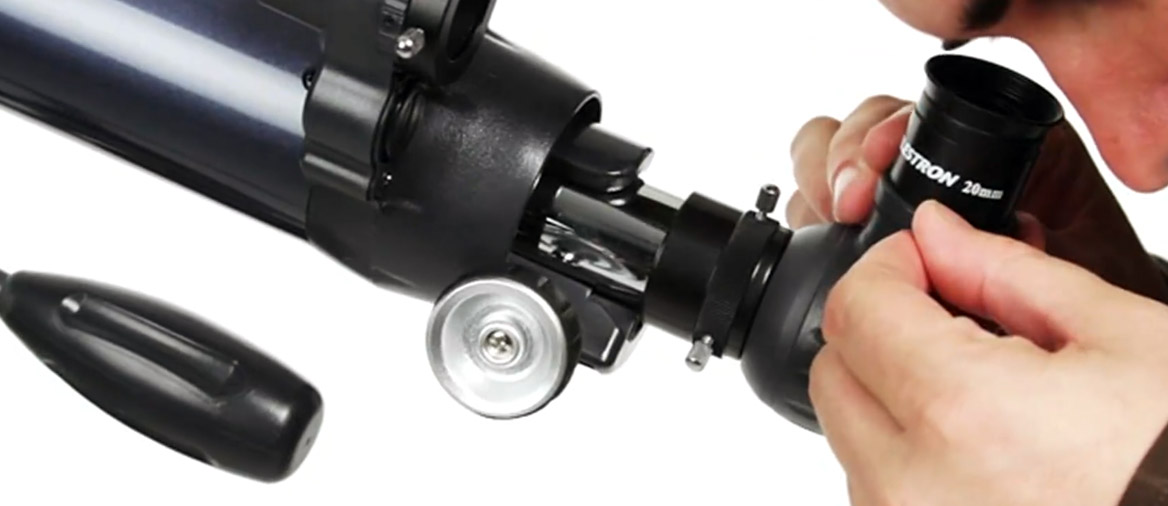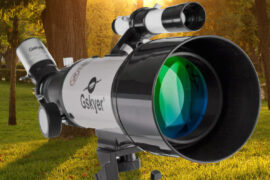Let’s face it. Sometimes as a beginner, you purchase a brand-new telescope hoping to see the giant red dot in Jupiter or Saturn’s rings in all their glory. Then, you take it out of its box, set it up, take a good look and all you see are little bright-colored dots. Not at all the magnificent views you were hoping for.
Well, there could be a few reasons for that, and in this article, I’ll show you a few things to try to increase the magnification of a telescope. But to be clear right from the start, whether it is possible to get more detail out of your images or not, is going to depend on your specific model.
Let’s clear some things up first.
What is magnification in a telescope?
The magnification, or power as is sometimes referred to, is the number of times that the image a telescope captures is blown up for you to be able to see it in more detail.
Telescopes can magnify images anywhere from 10x to hundreds of times.
More magnification isn’t always better when it comes to stargazing. Some objects do show plenty of detail with high-powered telescopes, like the planets or the Moon. However, deep-space objects that are very far away and are quite large, are (somehow ironically) better observed with low magnification because you won’t get much detail out of them anyway so it is better to watch them as part of a larger area.
High magnification also makes it harder to track objects. So, as you can see, there are tradeoffs.
The magnification is determined by a very simple formula which is:
Magnification = Focal length of the telescope / Focal length of the eyepiece.
The focal length is the distance the light travels from the primary lens of the telescope to the exit point. In basic refracting telescopes, it is going to be almost equal to the length of the tube.
Every eyepiece you use also has its own focal length. That is the number that is engraved in most eyepieces and can go from 2.5mm to 50mm.
As you can see from the formula below, a lower focal length of the eyepiece is going to mean more magnification. So, the eyepieces with the lowest numbers like 4mm, 6mm, etc. are “high-powered” eyepieces while the 32mm or 40mm are “low-powered”.
Maximum useful magnification
Unfortunately, you can’t just stick any high-powered eyepiece into a telescope and get a good image out of it.
Every telescope has a maximum limit to the magnification you can get out of it. If you cross that line, you are not going to get any more detail out of the image and you might even start to get blurry and out-of-focus images.
This limit is called “maximum useful magnification” or “highest useful magnification” and is going to be determined by the aperture of the telescope.
The formula for the maximum useful magnification is:
Mu Magnification = Aperture (in millimeters) x 2
and for our friends who use freedom units:
Mu Magnification = Aperture (in inches) x 50
You can also use our highest useful magnification calculator if you don’t want to do the math.
With that number and a simple rule of 3 (or the magnification calculator linked above), you can calculate which is the highest-powered eyepiece that you can use.
Example:
Let’s say you own a Celestron StarSense Explorer LT 80AZ. That telescope has an aperture of 80mm and a focal length of 900mm.
Enter the aperture in the calculator and you get that the maximum useful magnification is 160x.
Enter the telescope focal length in the magnification calculator and then try a few values for the eyepiece focal length until you get close to 160x.
For this example, you will get a maximum eyepiece focal length of 5.7mm but since there aren’t any eyepieces of that exact size, let’s round it to 6mm.
6mm eyepieces are the highest-powered eyepieces that can be used with that particular telescope.
How to increase the magnification of a telescope?
Armed with everything we learned above, we can now answer the original question.
How to increase the magnification of a telescope?
The best way to increase the magnification of a telescope is to use eyepieces of a focal length that matches or gets very close to the maximum useful magnification of the telescope.
This can be done either using high-powered eyepieces directly or through accessories like Barlow lenses or focal extenders that can multiply the magnification of your eyepiece collection for cheap.
Besides those two options, there is no way to increase the maximum magnification that a telescope can reach. That is a fixed number that is determined by its aperture. This is why I so often insist on the guides of this site that getting the highest aperture that your budget allows for should be a priority when purchasing a telescope.
Summary
- The magnification of a telescope is determined by its focal length and the focal length of the eyepiece being used at the time.
- To increase the magnification, use higher-powered eyepieces or artificially increase their focal length using a Barlow lens.
- There is a hard limit as to how much magnification can a telescope reach. That number is the maximum useful magnification and is determined by its aperture.







